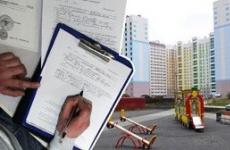How to make a do-it-yourself railroad layout? How to make a railroad layout.
For young modellers and enthusiasts who feel sorry for or do not have money for purchased rails, but have time, below we present you an example of a budget modeling railway track.
foundation our road is a stretcher, knocked together from slats and plywood. Its size can be approximately 3000x500x120 mm or more. It depends on the area of the room. The role of ballast is performed wooden blocks on which the sleepers are laid. Homemade rails are attached to the sleepers.
And to make the canvas of your road look like a real one, grease it with liquid carpentry glue and sprinkle it with sand sifted through a fine sieve. When the glue dries, shake off the excess sand. You can do otherwise: paint the stretcher with paint. Of course, you must first putty it, clean it with sandpaper ...
Sleepers can be made from strips of plywood or pine planks 60x10x4 mm. In order not to mess with the manufacture of each sleeper, the work can be simplified. Take a sheet of plywood, mark it according to the size of the sleepers and cut it with a fine-toothed hacksaw, then clean up all the irregularities with a bastard file and sandpaper and paint oil paint or black ink.
Finished sleepers are laid on the canvas - they are glued at a distance of 20-25 mm from each other.

They need a stamp to make them. It is made from two metal rectangular bars of the same section.
On a milling or planing machine, process these bars. On one, mill a groove 7x10 mm in size and two grooves with a diameter of 3 and 4 mm, on the other - the same grooves, but instead of a groove, a protrusion. You get a fixture like a punch and a matrix. The rail head is stamped in the recess (see figure below). For a 1:50 model, a 3.5 mm notch is used, and for a 1:100 model, 2.5 mm.
Let's talk about the sequence of operations. Take a strip of tin (see figure below), draw a center line, fold. Insert a wire with a diameter of 2.5-3 mm inside - for the rail head, crimp it with wire cutters and now lay it in a stamp. Clamp the stamp in a vice, and you will get a rail that is even along the entire length with a good head and neck.
Without removing the rail from the stamp, flare its base with a screwdriver in different directions and level it with a mallet.
Attach the finished rail to the sleepers with carnations. Do this carefully and as accurately as possible. First of all, mark the line of one thread of rails along the entire length of the canvas. To do this, pull the thread exactly at a distance of 15 mm from the edge of the sleepers, reinforcing it on two nails temporarily driven into the first and last sleepers. Lay the rails and nail exactly under this thread. At the same time, they should neither touch it nor pull it to the side.
There is another way. Plan out a rectangular bar measuring 1000x32x10 mm. Lay it in the center of the ballast, secure it with nails and lay rails on both sides of it. You will see how exactly they fit, and the distance between them will be accurate along the entire length - equal to 32 mm between the heads.
It is necessary to connect the rails to each other at the joints with rods that are inserted into the rail heads. Rail joints should be in the middle of the sleepers.
When you make one section of the track, test the locomotive on it and proceed to the construction of the next section.
Fasten the sections together with metal hooks or loops attached to the stretcher.
So, you have built a railway track, laid sleepers, rails. Now you need to install the support masts and pull the contact wire.


Support masts. From a bar with a length of 200 mm and a section of 21 x 21 mm, cut out a support. For the base, take plywood (30 x 30 mm). Drill a hole with a diameter of 10 mm in the center, clean it with sandpaper and fit the bottom of the mast under it.
You can make the suspension on which the contact wire is attached from any wire with a diameter of 2-3 mm. Do not forget to wind the spring as shown in the figure, for this, take a nail with a diameter of 2 mm, clamp it in a vise and wrap a spiral around it with a height of 10-12 mm. The pendant is ready. It is attached to the supporting mast through a bracket and, in addition, for greater strength, it is pulled up with a string - an ordinary thread or thin wire.
insulators there may be plastic beads or small buttons.
contact wire runs along the entire railroad track. It is supported by the support masts that we just told you about, and the support wire. It is fixed above the contact wire and connected to it by wire braces.
To make the model portable, the overhead wires have a break in several places and are connected by connectors - two metal plates: a contact wire is soldered to one, and a support wire to the other. The plates are equipped with a lock - cutouts are made on one, rivets are soldered on the other. Thanks to this, the plates are easily and quickly separated.
You can "green" the finished railway. The material for the "grass" is dry sawdust, painted with gouache in green color. They are sifted through a sieve onto a tablet smeared with carpentry glue, drying oil or oil varnish.
"Trees" are made from a rubber sponge, foam rubber or a bundle of copper wire. The bundle is folded in half and twisted to the distance of the "trunk", and for the "branches" the wire is disconnected. In order for the “tree” to “turn green”, it is dipped in liquid glue, allowed to drain and the “crown” is sprinkled with finely chopped dyed tissue paper.
The history of this crafts short. During the summer holidays I had quite a lot of free time and wanted to do something do it yourself. One day, passing by a railway crossing, I had an idea to make a working model of such a seemingly ordinary object.
For foundation you need a drawer from the table. We mark the locations of objects on the box and drill holes for attaching the semaphore and lanterns, as well as drill holes for wiring the house.
For the house you will need:
- a piece of thin plywood;
- thin transparent plastic;
- matches;
- whatman;
- led with wires to illuminate the house.
We cut out the walls and the roof of the house, then saw through two windows in the walls and glue the resulting parts together with hot glue, paint. We cut glass from plastic. In size, they should be slightly larger than the window opening and glue them. We cut and paint matches. With help super glue we make window frames. At the end, we attach the LED in the center of the roof of the house.

Now let's deal with the road and the landscape:
Road consists of glued finely sifted screenings, which are rolled. The surface has been painted and marked.
Railway track we do the same as the road, only we add a second layer (smaller width). On top we lay sleepers made of ice cream sticks and rails made of thick aluminum wire.

Grass made of shavings painted green.
Lanterns will need :
- LEDs with wiring;
- The body of an ordinary ballpoint pen and a core from a helium one;
- incomprehensible gizmos that lay in my desk.
Putting it all together, we get:

Semaphore:
- Dowel for skirting boards
- Pen body and helium pen refill
Cut off the top part of the dowel. Bend the rod at an angle of 90 degrees. We cut off half of the handle, drill the cut off part of the dowel and the handle, connect them.

barriers: We make them from two pieces of plywood of different thicknesses and make two holes at the ends of a narrow strip.
Electronics and mechanisms
We make a simple multivibrator circuit and attach it to semaphores. They turn on when the barriers are lowered using a makeshift "relay".
Soon New Year, and it’s better to prepare for it in advance - including on the layout :) Therefore, I made a New Year’s diorama for myself in my favorite scale - TT.
The diorama turned out to be 20*20 cm in size. The diorama is made on a self-made "box" made of plastic.
The Christmas tree is made of brass tubing with soldered wire branches. Needles - the usual HOH-ovsky tinted flock.
The height of the Christmas tree without a star is 13 cm. Christmas decorations- different beads. Rain - real rain, a little clipped. The star is cut out of a piece of plastic and sprinkled with glitter powder. On the Christmas tree there are four luminous garlands of SMD LEDs in the 0603 case, 11 in each. The garlands can blink (a primitive circuit on a transistor and a capacitor), there are two modes: normal - a simple glow, and blinking.
Snow is made from ordinary baking soda mixed with diluted PVA glue. Paving stones on the square - from Auchagen.
Icy glowing cubes - molded from plasticine and copied from CrystalLine 940 transparent resin. Blue and white LEDs are "poured" into the resin.
Figures - Preiser, self-painted. There are not enough figurines - in the TT "winter" there are few produced at all. I think that I will remake more from the "summer" figures ...
Decorative gifts under the Christmas tree - cut out of cardboard and pasted over with paper from candy wrappers.
Machine - "Moskvich" from Herpa. Snowman - made of foam balls.
In general, the process of creating the square took a month - mainly in the evenings and weekends. If only I didn't have to go to work... :)
The houses in the photo are not part of the diorama - they are simply placed for the background.
Square during the day
Tree from four sides:








And here is Ippolit Georgievich :)


Square at night
The photos were taken with different exposures.



Process photo
 Christmas tree frame. After soldering, I painted the frame green.
Christmas tree frame. After soldering, I painted the frame green.
 Christmas tree with flock. The flock has not yet been dyed desired color.
Christmas tree with flock. The flock has not yet been dyed desired color.
If you and your child are thinking of making a toy with your own hands, then try building your own railroad. Children love toys with lots of details. A railway assembled with an adult can become a favorite toy. For manufacturing, you will need very few items that can be found in any home. And in the end you will get a unique and bright thing that will delight your child and remind you of the time spent with you. If you don't know how to make a railroad yourself, but want to try, then it's time to learn.
Tools and materials
- Thick cardboard sheets
- Ruler
- simple pencil
- Paper scissors
- Stationery knife
- PVA glue
- Acrylic paints
Step-by-step instruction
There are several ways to make a toy railroad, but it's best to start with the simplest.
- Determine the approximate size of the future railway. The length of the rails will depend on it. The rails need to be cut out of thick cardboard. You can use boxes from shoes, furniture or appliances. Lay a sheet of cardboard on the floor and draw stripes of the chosen length on it. For sure, your railway will have bends, so you will need not only straight lines, but also curved strips for turns. Thus, you can make a ring road, which is much more interesting to play with.
- Paint future rails with gray paint, as it is most similar to metal. Choose acrylic paints, as they are not washed off the surface of the paper.
- Prepare your sleepers. To do this, cut a sufficient number of small strips of cardboard. At both ends of the sleepers, you need to mark the points where the rails will be superimposed. Sleepers are best covered with brown or red paint, as they are made of wood.
- Lay out the painted blanks of rails in the correct order and turn them upside down. On this side, you need to glue the prepared sleepers at the same distance from each other.
- Now it's time to move on to making the train. For wagons and a locomotive, it is most convenient to use small cardboard boxes from juice or milk. If there are no such boxes, then you can glue them from pieces of cardboard yourself. For the locomotive, you will need two boxes that need to be glued together so that one box is vertical and the other horizontal.
- The locomotive and wagons are usually painted the same color, but you can use any color and pattern you like. After the paint dries, don't forget to paint the windows.
- Painted wheels must be glued to the wagons, and the wagons themselves must be interconnected with strips of cardboard. The train is now ready to be placed on the railroad.
- To make the toy even more interesting, make cardboard box station or several stations. They can be realistically painted with paints. From the remnants of cardboard, you can cut out the silhouettes of people, trees, houses, roadside poles and paint them with felt-tip pens and paints.
How to assign roles
Now you know how to make a railroad with your child. Let him actively participate in the process. The child can be entrusted with coloring the parts and gluing the parts of the railway together. And it is better to do all operations with scissors and a clerical knife yourself so that the child does not cut himself. If you want to trust your child to cut out some of the details, then give him scissors with rounded ends, designed for small children.
Hobbies are different: someone quietly and calmly collects stamps or candy wrappers, fitting their entire collection into a thick album in the top drawer, someone plays golf on Saturdays, and someone chooses an entire art direction as a hobby and devotes it all of my life.
This is exactly what can be said about lovers and fans of a railway or railway miniature, because to create crafts of this kind, one desire is not enough - it will take a lot of time, effort, careful collection of information, sometimes resources, and financial investments, and, of course, skills, so that as a result you get a real miniature railway of your own.
Features and types of railway modeling
Railway in miniature - a subject of interest not only for children, but also for adults, and adults even more and more often. Almost every child had a children's toy in the form of a railway station with rails, steam locomotives and wagons, and if it cost more, then the kit included various railway signs, a semaphore, figures of drivers and other interesting details.

It’s interesting to play this, but I always wanted more, for example, so that the railway network would be more developed and contain many branches and turns of the rails, so that train models were inertial or moved by themselves, and you could control them using the remote control, so that there were many additional elements: tunnels, bridges, roads with vehicles, trees, people, etc.
To make such a toy, or rather, not a toy, but a real mock-up of a railway with your own hands, you need to work hard, and not all children have such an opportunity, so you will probably need the help of your parents. It’s good if they share your passion for railway miniatures and help in creating crafts. For an adult lover of railway modeling, of course, it is easier in this regard.
As for the directions in which there is a miniature railway hobby, they are separated by several:
- some simply collect only toy rails, trains and all their accessories;
- others also collect, but already scale models;
- still others are engaged in the manufacture of railways in miniature, recreating entire historical stations and railway stations, laying a real railway network from different directions of the tracks, engaged in the actual reconstruction of certain objects;
- someone tries to make miniature copies of real or existing locomotives and trains in the smallest detail;
- and another interesting type of railway modeling is a park or garden railway, for the creation of which a very large scale is used, so such a model of the railway can even be used as an attraction and transport people in it.

A bit of history
A miniature railway is not a tribute to fashion and not a new phenomenon, because the history of railway miniatures and modeling goes back more than one hundred and fifty years. For the first time, the model of the railway appeared, like a toy, in the nineteenth century (in its second half). Germany, represented by the manufacturer Märklin, took over the provision of the necessary industrial volumes. Their miniature railways were of such high quality and good that even the royal family ordered such a model for the Winter Palace.
Based on the scale of the railroad shown in the German-made miniature, scale standards for railroad modeling were later adopted. By the end of the nineteenth century, America joined the cause, for the first time in the world, launching on the market electric model railway (manufacturer - Carlisle & Finch).

Almost until the middle of the last century, both an ordinary toy in the form of railway rails with a train, and an ideally exact copy or a miniature railway were perceived in the same way, however, after the toy ceased to cause such a stir, and modeling began to take shape as a serious hobby, gradually finding more and more more fans.
Therefore, the manufacturers tried to please their new admirers - adults who were eager to assemble a full-fledged miniature model of the railway. To do this, they began to produce more advanced models, where the rails could be folded into a full-fledged railway track in miniature, where locomotives and wagons had many parts and elements, which also included various buildings, road paraphernalia and signs, a semaphore, etc.
Nowadays, there are practically no world-class giant firms left that would be engaged in such production, however, there are many small successfully functioning companies specializing in the production of certain models of trains or additional accessories, without which a miniature railway is impossible.
Scales, components and other nuances
To make a model of a railway, you must understand many nuances, for example, on what scale a miniature railway is usually made, what types of sets and configurations of crafts can be obtained, whether a diagram is needed and where to get it, what to do with accessories, necessary details and various accessories, etc.
Scale and size standards for railway modeling are very different. The most common are sizes bearing the symbol TT and NO.
The TT standard size - from the English Table-top trains - means that the model of the railway is carried out on a scale of one to one hundred and twenty (1:120) with a gauge of twelve millimeters. Such a miniature railway is also called a twelve-millimeter railway. All mobile models of trains are also made in it - this is done by supplying electricity along the rails, although it is possible to connect an electric locomotive through a contact network.

A large number of models and various accessories for assembling railway miniatures of this size are produced by:
- German companies Berliner TT Bahnen, Tillig;
- European manufacturers Roco and Piko have a small selection;
- Jago pleases fans with rare models of vintage locomotives;
- Russian firms "Peresvet" and "TT-model";
- American PossumValleyModels, GoldCoast (some models of wagons and locomotives).
Another common size is NO. The name comes from the English abbreviation HalfZero or half zero. The model of the railway in this case is produced in a scale ratio of one to eighty-seven (1:87). There is also a size 0, in which the scale is taken twice as much, that is, 1 to 45. And here it turns out half of zero, but the Latin letter O is used instead of it in the designation.

A miniature railway in this scale is considered the most popular and widespread in the world due to the fact that it can be made without the use of complex devices, moreover, these models of railways are large enough for detailing, but at the same time quite convenient and compact to place the layout in the house or apartment.
A miniature railway of this standard size is also mobile: energy is supplied from a contact network or along rails (if there is electric motors in locomotive models). Plus - you have the opportunity to use additional interesting elements when creating crafts:
- a smoke generator device that will run on oil and create a smoke effect over diesel locomotives or steam locomotives;
- installation of a sound decoder in the rolling stock - you can play any sound files that imitate noises and sounds of train traffic, etc.;
- signaling devices, which stands for signaling, centralization and blocking.

Various other sizes also exist. For example, the large-scale G standard, which has been developed and produced since 1968 and is still being developed by the German company LGB. This is the clearest example of an outdoor garden railroad. In general, the larger the scale at which a miniature railway is built is chosen, the more detailed the prototype should be repeated, the smallest details and elements should be taken into account.
Do it yourself or buy?
Today you can find many thematic forums, special publications dedicated to railway modeling. You can purchase various elements separately and put them together later, mounting your own railroad layout.
However, first of all, you will need to decide on the available free space. Can you allocate half or even an entire room for the layout? If not, then you will first have to deal with the construction of a mock-up or equipment of a special place. To do this, you can use at least a separate table or make a retractable / folding tabletop, which will be used only for your project and nothing else, which means that you do not have to fold and remove the layout every time.
There are also options for modular layouts, which consist of individual blocks, cantilever structures (you can attach mock-ups to the walls like shelves) and lift-ups (easily stows away under the ceiling).
It is also better to take the appropriate scale for an apartment, for example, with a size of 1:87 you will not do much, because you will need a space of one by three meters at a minimum. It is better to stop at 1:120 or 1:160 scales, since designing a layout in an even smaller Z size (1:240) will require a lot of skill, effort and financial investment.
To create your own miniature railway, you will need to come up with and think over its future appearance to the smallest detail. Perhaps you should start with the simplest scheme, for example, make only one rail ring and a locomotive with several cars. Over time, you will add additional tracks, trains, semaphore and signs, station and buildings, figures of people, etc. to the project.
Experienced craftsmen already know how to create whole detailed landscapes - mountains and plains, bridges and tunnels, forests and fields, miniature streets, numerous forks in the paths, depots and other interesting things.
Even for the simplest project, it is better to make a diagram. Just try to draw what exactly you want to create. If your plans are to create a railway of a certain historical era, then you will need to thoroughly study all available information on this topic, find archival photographs, copy them, etc.
Also detailed diagram will be needed for the manufacture of models of steam locomotives and wagons. You can use the drawing diagram of a particular machine by looking for its photo. Just divide the real dimensions of this or that train by the scale you need and you will have ready plan the buildings.
Step by step work plan
- Provide space for the project and make a sub-layout (a simple configuration can even be placed on a plywood sheet).
- Transfer the scheme of the future railway miniature to the mock-up (draw how the rails will pass, mark the forks and turns, roads where you will place buildings or structures). For a complex rail arrangement, the scheme can be designed on a computer in a special program.
- Laying rails. Rail material can be bought at a specialized store or you can make them yourself. Since current flows along the rails in moving roads, craftsmen make them from thick copper wire, rolling it to a rectangular section on a manual machine. Sleepers are made of thin bars, which are also cut on the machine. The tracks are attached in two ways: they are either glued or nailed to the base with small studs, you can then solder the rails to the same studs or also glue the rails to the sleepers.
- For a mobile model, you need to additionally develop wiring diagram, and then mount it already on the layout. Homemade blocks are usually taken as a power source, you can also take a factory one. Do not forget about safety rules - the output voltage cannot be high, use a power supply unit up to sixteen volts, and if the model is small, then six to nine volts will be enough. The electric motor for the train can be purchased at the radio store or removed from any toy. Conduct electricity to the engine from two rails. To distribute electricity throughout the base, stock up on connectors and copper wires. Think over all the details before wiring - where the semaphores and traffic lights, barriers will be located, whether the lights will be on, etc.
- Backfill and lay the ballast, selecting it in size among aquarium soils or any household bulk materials.
- Think over and make a relief and a landscape. To make your layout look like a real one, be sure to design a beautiful landscape. You can use professional materials such as trowel-mass, forest litter, meadow powder, different layers of the earth, crushed stone, sand, gravel and other interesting accessories from well-known manufacturers. If you choose more budget options, then to imitate the mountains, it is quite possible to get by with construction foam, which can then be easily painted in any desired color. Hills, fields, vegetation and other decor can also be recreated from plywood, building plaster, fiberglass, papier-mâché, wood and others. finishing materials. To paint the details, use acrylic paints.
- If there is no time and desire to bother so much, then many elements can be taken to the layout and in ready-made, for example, from toy sets, in which there are figures of trees, and dummies of grass or bushes, animals, cars, signs, people.
- With buildings the same situation - either use ready-made options, or build your own from cardboard, wood, plywood, papier-mâché. Use photographs of real stations and other buildings as references.
- Add the necessary components: draw roads, paint the grass, arrange the figures of people and put the trains on the rails.
Passion for railway modeling can start with a gift set with a railway and trains. Such a hobby, although it requires considerable effort and expense, undoubtedly helps to develop, think, create and not stand still.






